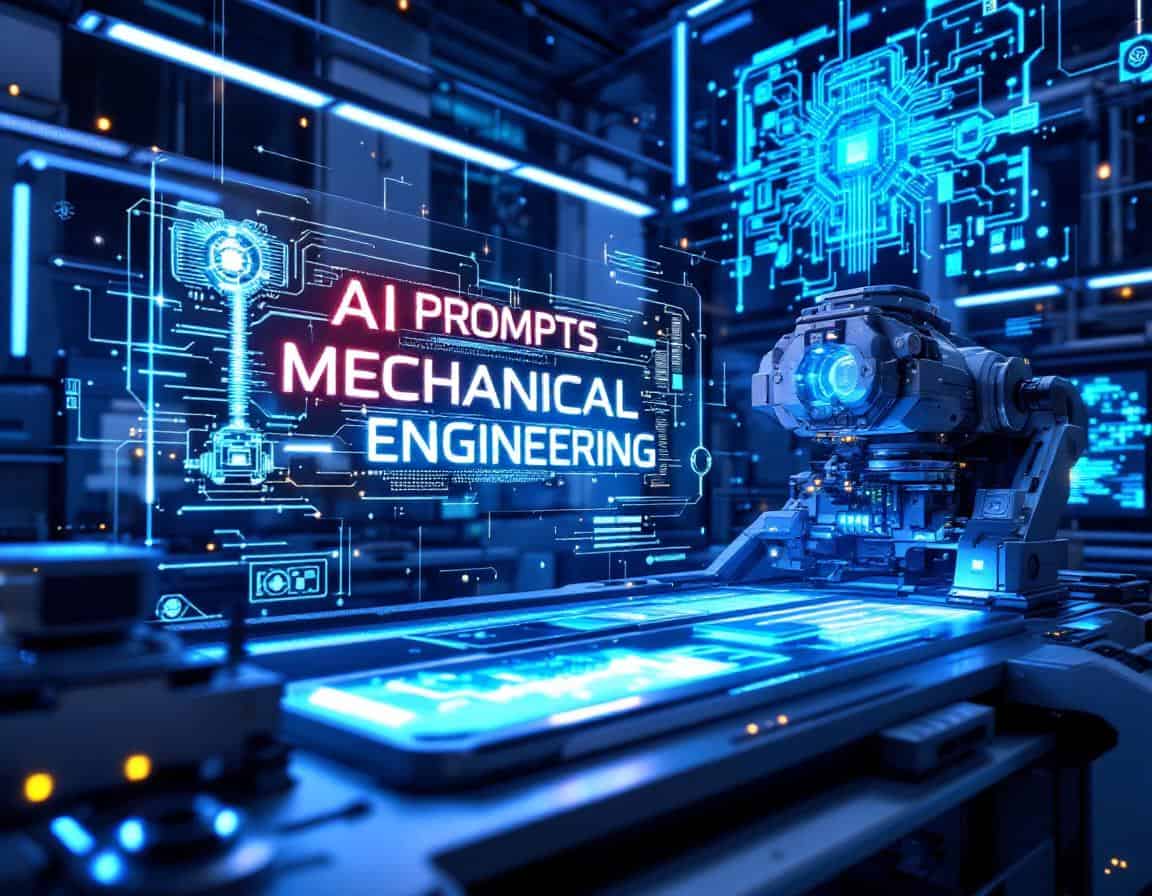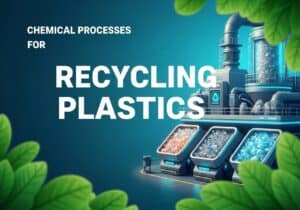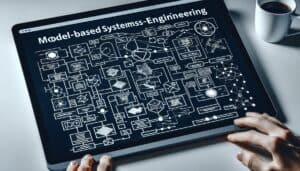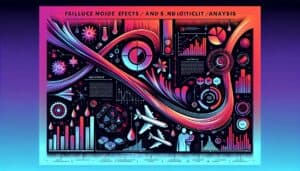
تعمل أدوات الذكاء الاصطناعي عبر الإنترنت على إحداث تحول سريع في الهندسة الميكانيكية من خلال زيادة القدرات البشرية في التصميم والتحليل, التصنيعوالصيانة. يمكن لأنظمة الذكاء الاصطناعي هذه معالجة كميات هائلة من البيانات، وتحديد الأنماط المعقدة، وتوليد حلول جديدة أسرع بكثير من الطرق التقليدية. على سبيل المثال، يمكن أن يساعدك الذكاء الاصطناعي في تحسين التصاميم من حيث الأداء وقابلية التصنيع، وتسريع عمليات المحاكاة المعقدة، والتنبؤ بخصائص المواد، وأتمتة مجموعة واسعة من المهام التحليلية.
ستساعد المطالبات المقدمة أدناه على سبيل المثال في التصميم التوليدي، وتسريع عمليات المحاكاة (FEA/CFD)، والمساعدة في الصيانة التنبؤية حيث يحلل الذكاء الاصطناعي بيانات المستشعرات من الآلات للتنبؤ بالأعطال المحتملة، مما يتيح الصيانة الاستباقية وتقليل وقت التعطل، والمساعدة في اختيار المواد وغير ذلك الكثير.
- هذه الصفحة خاصة بنطاق واحد. إذا لزم الأمر، يمكنك الحصول على إمكانيات بحث كاملة حسب جميع المجالات وجميع المعايير في > دليل موجهات الذكاء الاصطناعي <، مخصص لـ تصميم المنتج و الابتكار.
- نظرًا لموارد الخادم والوقت، فإن المطالبات نفسها محجوزة للأعضاء المسجلين فقط، ولا تظهر أدناه إذا لم تكن مسجلاً. يمكنك التسجيل، 100% مجاناً:
- النمذجة التنبؤية
- الهندسة الميكانيكية
موجه الذكاء الاصطناعي إلى أداة التنبؤ بأداء النظام
- تقييم الأثر البيئي, التقنيات البيئية, التعلّم الآلي, خوارزميات الصيانة التنبؤية, إدارة الجودة, التحليل الإحصائي, التحكم في العمليات الإحصائية (SPC), تصميم النظام
تطلب هذه المطالبة من الذكاء الاصطناعي التنبؤ بالأداء المستقبلي لنظام ميكانيكي بناءً على البيانات التشغيلية التاريخية والعوامل البيئية المقدمة بتنسيق JSON. يقوم الذكاء الاصطناعي بإخراج تنبؤ سلسلة زمنية مع فترات ثقة.
المخرجات:
- JSON
- لا يتطلب إنترنت مباشر
- الحقول: {historical_data_data_json} {العوامل_البيئية_json}
Given the historical operational data: {historical_data_json} and environmental factors data: {environmental_factors_json}, forecast the mechanical system's performance over the next 12 months. Use appropriate time series forecasting methods and provide confidence intervals for predictions. Structure the output as a JSON object with keys: 'month', 'predicted_performance', 'confidence_interval_lower', and 'confidence_interval_upper'. Include brief comments on model choice and assumptions.
- الأفضل لـ الأفضل لتوقع سلوك النظام الميكانيكي في ظل ظروف مختلفة
- تقييم المخاطر وتحليل السلامة
- الهندسة الميكانيكية
موجه الذكاء الاصطناعي إلى Mitigation Strategies for Vibration Failures
- التحسين المستمر, تحليل الفشل, الهندسة الميكانيكية, خوارزميات الصيانة التنبؤية, تحسين العمليات, مراقبة الجودة, إدارة المخاطر, Vibration Analysis
Suggests and elaborates on potential mitigation strategies for vibration-induced failures in specified mechanical equipment given a summary of vibration data and any current attempts. This helps engineers find solutions to improve reliability. Output is a markdown list.
المخرجات:
- تخفيض السعر
- لا يتطلب إنترنت مباشر
- Fields: {equipment_description_text} {vibration_data_summary_text} {current_mitigation_attempts_text}
Act as a Vibration Analysis and Reliability Engineering Consultant.
Your TASK is to propose and elaborate on potential mitigation strategies for vibration-induced failures in the `{equipment_description_text}`
considering the `{vibration_data_summary_text}` and any `{current_mitigation_attempts_text}`.
You should suggest a range of solutions
from simple to more complex.
**1. Input Analysis**:
* `{equipment_description_text}`: Description of the affected equipment and its function (e.g.
'Centrifugal pump
Model XYZ
used for cooling water circulation'
'Large industrial fan mounted on steel frame'
'Pipeline section experiencing flow-induced vibration').
* `{vibration_data_summary_text}`: Key characteristics of the problematic vibration (e.g.
'High amplitude at 1x rotational speed (unbalance)'
'Dominant frequency matches nearby machine's operating speed (external source)'
'Broadband random vibration with peaks near structural resonances'
'Flow-induced vibration at 50-60 Hz'). Include specific frequencies and amplitudes if known.
* `{current_mitigation_attempts_text}`: What
if anything
has already been tried and its outcome (e.g.
'Attempted balancing
reduced vibration by 20% but still too high'
'Added stiffeners to frame
shifted resonance but problem persists at new frequency'
'None attempted yet').
**2. Mitigation Strategy Brainstorming & Elaboration**: Based on the inputs
propose several distinct strategies. For each strategy:
* **Strategy Name/Type**: (e.g.
Source Modification
Path Interruption
System Modification
Damping Treatment).
* **Specific Action(s)**: Detail the concrete steps or changes involved.
* **Principle of Operation**: Explain HOW this strategy reduces vibration or its effects in the context of the `{vibration_data_summary_text}`.
* **Applicability/Suitability**: How well does this strategy address the likely root cause suggested by the vibration data? (e.g.
If unbalance is indicated
balancing is highly applicable).
* **Potential Pros**: Advantages of this approach.
* **Potential Cons/Challenges**: Disadvantages
cost
complexity
potential side effects.
* **Consideration given `{current_mitigation_attempts_text}`**: How does this build upon or differ from what was already tried?
**Categories of Strategies to Consider (examples
tailor to the problem)**:
* **Source Treatment**:
* Balancing (for rotating machinery).
* Alignment (for coupled machines).
* Modifying operating speed to avoid resonance.
* Reducing fluid flow velocity or changing flow path (for FIV).
* **Path Treatment**:
* Isolation: Using resilient mounts (elastomeric
spring isolators) to decouple the source from the receiver.
* Barriers: Enclosures for noise/vibration.
* **System Response Modification**:
* Stiffening: Adding braces or gussets to shift natural frequencies away from excitation frequencies.
* Mass Addition: Adding mass to shift natural frequencies.
* Damping:
* Applied Damping Treatments (e.g.
viscoelastic layers
constrained layer damping).
* Tuned Mass Dampers (TMDs) for specific problematic frequencies.
* Active Vibration Control (more complex
using sensors
actuators
and controllers).
**3. Output Format (Markdown)**:
* **Title**: Vibration Mitigation Strategies for `{equipment_description_text}`.
* **1. Summary of Vibration Problem**: Briefly restate the core issue based on inputs.
* **2. Proposed Mitigation Strategies**: For each strategy:
* `### Strategy X: [Strategy Name/Type]`
* `**Specific Actions:**`
* `**Principle of Operation:**`
* `**Applicability/Suitability:**`
* `**Potential Pros:**`
* `**Potential Cons/Challenges:**`
* `**Relation to Previous Attempts:**`
* **3. General Recommendations & Next Steps**: Suggest a logical approach to selecting and implementing strategies (e.g.
'Start with source treatment if possible'
'Consider simulation or modal analysis to predict effectiveness of structural modifications'
'Implement incrementally and monitor results').
**IMPORTANT**: The strategies should be technically sound and relevant to the described problem. The AI should aim to provide a range of options suitable for different levels of complexity and cost.
- Best for: Assisting mechanical engineers in identifying and evaluating various mitigation strategies for vibration-induced failures based on equipment type and vibration characteristics.
- تقييم المخاطر وتحليل السلامة
- الهندسة الميكانيكية
موجه الذكاء الاصطناعي إلى Machine Design Safety Compliance Check
- التصميم من أجل التصنيع (DfM), التصميم من أجل الاستدامة, تقييم الأثر البيئي, بيئة العمل, ضمان الجودة, مراقبة الجودة, إدارة المخاطر, السلامة
Evaluates a machine design’s features against user-provided snippets of relevant safety standard clauses to identify potential non-compliance areas. This aids in designing safer machinery from the outset. Output is a markdown checklist.
المخرجات:
- تخفيض السعر
- لا يتطلب إنترنت مباشر
- Fields: {machine_design_features_description_text} {safety_standard_clauses_text} {country_of_operation_for_context}
Act as a Machinery Safety Specialist with expertise in CE Marking/OSHA compliance (or general machinery safety principles).
Your TASK is to perform a preliminary safety compliance check of the described `{machine_design_features_description_text}` against the provided `{safety_standard_clauses_text}`. Consider the general safety expectations for the `{country_of_operation_for_context}` if it influences interpretation (e.g. EU vs USA).
**1. Input Analysis**:
* `{machine_design_features_description_text}`: A textual description of the machine's key design features
safety components (guards
E-stops
interlocks)
operational modes
and human interaction points.
* `{safety_standard_clauses_text}`: Text containing specific clauses or requirements excerpted from relevant safety standard(s) (e.g.
snippets from ISO 12100
ISO 13849-1
IEC 60204-1
or specific Type-C standards). The user provides these excerpts.
* `{country_of_operation_for_context}`: The intended country or region of operation (e.g.
'European Union'
'USA'
'China')
as general safety philosophies can differ.
**2. Compliance Check Methodology**: For EACH provided clause in `{safety_standard_clauses_text}`:
* **Understand Clause Requirement**: Interpret the main safety objective or requirement of the clause.
* **Compare with Design Features**: Assess the `{machine_design_features_description_text}` against this specific requirement.
* Does the design appear to meet the requirement?
* Are there features that clearly violate or contradict the requirement?
* Is there insufficient information in the design description to make a judgment?
* **Identify Potential Gaps or Non-Compliances**: Clearly state where the design may fall short.
* **Suggest Areas for Improvement or Verification**: What specific aspects of the design should be reviewed
modified
or further documented to ensure compliance with this clause?
**3. Output Format (Markdown)**:
* **Title**: Preliminary Safety Compliance Check: [Machine Name/Type from description] vs. Provided Standard Clauses.
* **Context**: Machine intended for operation in: `{country_of_operation_for_context}`.
* **Compliance Checklist**: For each clause provided by the user:
* `---`
* `**Clause Reference:** [Quote or clearly reference the clause from {safety_standard_clauses_text}]`
* `**Clause Summary/Objective:** [Your brief interpretation of what the clause aims to achieve]`
* `**Assessment against Machine Design ({machine_design_features_description_text}):**`
* ` - **Compliance Status:** [Compliant / Potentially Non-Compliant / Insufficient Information / Partially Compliant]`
* ` - **Observations/Reasoning:** [Explain your assessment based on the design features. Be specific.]`
* ` - **Potential Gaps Identified (if any):**`
* ` - Gap 1: ...`
* ` - Gap 2: ...`
* ` - **Recommendations/Questions for Design Team:**`
* ` - Recommendation 1: e.g.
'Verify guard opening sizes against EN ISO 13857 for this hazard zone.'`
* ` - Question 1: e.g.
'Is the emergency stop a Category 0 or Category 1 stop as per IEC 60204-1?'`
* `---`
* **Overall Disclaimer**: `This is a preliminary assessment based SOLELY on the provided design description and standard excerpts. A full compliance assessment requires a detailed review of the complete machine
its documentation
a full risk assessment
and consultation of the complete unabridged standards.`
**IMPORTANT**: The AI is NOT certifying compliance. It is identifying potential areas of concern or questions based on a limited comparison. The assessment should be objective and constructive
aiming to help the design team improve safety. If a clause is very complex or requires deep domain-specific knowledge not available
it's okay to state that a specialist review is needed for that point.
- Best for: Facilitating early-stage safety compliance reviews by checking described machine features against specific clauses from relevant safety standards provided by the user.
- Ethical Consideration and Impact Analysis
- الهندسة الميكانيكية
موجه الذكاء الاصطناعي إلى Ethical Risk Assessment for Mechanical Projects
- الهندسة البيئية, الأثر البيئي, الهندسة الميكانيكية, إدارة المشاريع, إدارة المخاطر, السلامة, ممارسات الاستدامة, التنمية المستدامة
This prompt guides the AI to analyze the ethical risks and societal consequences of a specified mechanical engineering project, considering environmental, safety, and social impact factors. It requires a detailed project description and intended application to provide a structured ethical risk assessment with recommendations for mitigation measures.
المخرجات:
- النص
- لا يتطلب إنترنت مباشر
- Fields: {project_description} {intended_application}
Analyze the following mechanical engineering project for potential ethical risks and societal consequences. The project description is: {project_description}. The intended application is: {intended_application}. Please provide a detailed ethical risk assessment that includes: 1) Identification of possible environmental impacts 2) Safety concerns for users and communities 3) Social and economic consequences 4) Recommendations for mitigating identified risks. Format your response using clear headings and bullet points for each section. Capitalize important keywords and use markdown for readability.
- Best for: Best for evaluating ethical challenges and societal impacts of new mechanical engineering projects
- Ethical Consideration and Impact Analysis
- الهندسة الميكانيكية
موجه الذكاء الاصطناعي إلى Sustainability and Environmental Impact Report Generator
- الهندسة البيئية, الأثر البيئي, تقييم دورة الحياة (LCA), تقييم أثر دورة الحياة (LCIA), مقاييس الاستدامة, التنمية المستدامة, الابتكار المستدام, مواد مستدامة, الممارسات المستدامة
This prompt requests the AI to generate a comprehensive sustainability and environmental impact report for a given mechanical engineering technology or process, considering lifecycle analysis, materials used, and energy consumption. The user inputs the technology name and key parameters.
المخرجات:
- تخفيض السعر
- لا يتطلب إنترنت مباشر
- Fields: {technology_name} {key_parameters}
Generate a detailed sustainability and environmental impact report for the mechanical engineering technology named {technology_name}. Use the following key parameters to guide your analysis: {key_parameters}. Include sections on: 1) Lifecycle environmental impact including raw materials sourcing and disposal 2) Energy consumption and efficiency 3) Potential for recycling or reuse 4) Recommendations for improving sustainability. Use markdown formatting with headings, bullet points, and bold important terms for clarity.
- Best for: Best for producing structured environmental impact documentation for engineering innovations
- Ethical Consideration and Impact Analysis
- الهندسة الميكانيكية
موجه الذكاء الاصطناعي إلى Policy Implications Analysis for Mechanical Innovations
- الأثر البيئي, التقنيات البيئية, Innovation Strategy, إدارة الجودة, التنظيم, إدارة المخاطر, المعايير, ممارسات الاستدامة, التنمية المستدامة
This prompt instructs the AI to evaluate the policy and regulatory implications of deploying a new mechanical engineering innovation. The user provides the innovation description and the target region or country to tailor the analysis to relevant legislation and standards.
المخرجات:
- النص
- يتطلب إنترنت مباشر
- Fields: {innovation_description} {target_region}
Evaluate the policy and regulatory implications of the following mechanical engineering innovation: {innovation_description}. Focus your analysis on the target region or country: {target_region}. Outline existing regulations, standards, and compliance requirements that could affect deployment. Provide recommendations on policy adaptation or lobbying strategies to facilitate innovation adoption. Use numbered lists and clear subheadings to organize your response.
- Best for: Best for understanding and navigating legal and policy frameworks affecting mechanical engineering projects
- Ethical Consideration and Impact Analysis
- الهندسة الميكانيكية
موجه الذكاء الاصطناعي إلى Ethical Dilemma Scenario Generator for Engineers
- التحسين المستمر, التصميم من أجل الاستدامة, Engineering Fundamentals, الأثر البيئي, تصميم يركز على الإنسان, الابتكار, الهندسة الميكانيكية, إدارة المخاطر
This prompt asks the AI to create realistic ethical dilemma scenarios specifically tailored to mechanical engineers based on a provided topic or technology. It helps professionals anticipate and discuss challenging situations requiring ethical decision-making.
المخرجات:
- JSON
- لا يتطلب إنترنت مباشر
- Fields: {topic}
Generate 3 detailed ethical dilemma scenarios related to the mechanical engineering topic: {topic}. For each scenario, include: 1) A brief description of the situation 2) The conflicting ethical principles involved 3) Potential consequences of different decisions 4) Suggested approaches to resolve the dilemma. Format the output as a JSON array with keys: 'scenario', 'ethical_conflict', 'consequences', and 'resolution'. Capitalize key terms in the text for emphasis.
- Best for: Best for training and preparing engineers to handle ethical challenges in their work
- الترجمة والتكيف اللغوي
- الهندسة الميكانيكية
موجه الذكاء الاصطناعي إلى Technical Specification Translation
- Design Documentation, التصميم من أجل التصنيع (DfM), Engineering Fundamentals, الهندسة الميكانيكية, تحسين العمليات, تطوير المنتجات, ضمان الجودة, إدارة الجودة
Translates a block of technical specifications for a mechanical component or system from a source language to a target language ensuring terminology accuracy. This facilitates international collaboration and product documentation. Output is the translated text.
المخرجات:
- النص
- لا يتطلب إنترنت مباشر
- Fields: {source_language_name_or_code} {target_language_name_or_code} {technical_specifications_text}
Act as a Technical Translator specializing in Mechanical Engineering documentation.
Your TASK is to translate the provided `{technical_specifications_text}` from `{source_language_name_or_code}` to `{target_language_name_or_code}`.
You MUST prioritize technical accuracy and the correct translation of specialized mechanical engineering terminology.
**1. Input Parameters**:
* `{source_language_name_or_code}`: The language of the input text (e.g.
'English'
'German'
'zh-CN').
* `{target_language_name_or_code}`: The language into which the text should be translated (e.g.
'Spanish'
'French'
'ja-JP').
* `{technical_specifications_text}`: The block of text containing technical specifications. This may include parameters
material callouts
performance data
testing standards
etc.
**2. Translation Process**:
* **Understand Context**: Parse the `{technical_specifications_text}` to understand the component/system being described.
* **Terminology Management**:
* Identify key technical terms
units of measure
and industry-specific jargon.
* Translate these terms with high fidelity
using established technical equivalents in the `{target_language_name_or_code}`. AVOID literal translations that might be technically incorrect.
* Ensure consistency in terminology throughout the translated text.
* **Preserve Meaning and Structure**:
* Translate not just words
but the precise technical meaning of each specification point.
* Maintain the original formatting (e.g.
bullet points
numbered lists
table-like structures if discernible in plain text) as much as possible in the translated output.
* **Units of Measure**:
* If units are present (e.g.
mm
MPa
kg)
generally retain them as they are
as these are often internationally understood. If conversion is explicitly part of a localization requirement (not requested here but good to be aware of)
that would be a separate instruction. For this task
keep units as in source unless the unit name itself needs translation (e.g.
'pounds' to 'kilograms' is a conversion
but if the word 'pounds' appeared it would be translated if appropriate). Assume standard SI/metric units are preferred if ambiguity arises and context suggests a technical document for global use.
**3. Output**:
* The output MUST be the translated text in the `{target_language_name_or_code}` ONLY.
* Do NOT include any of the original `{technical_specifications_text}` unless it's part of a bilingual presentation format (which is not requested here).
* Do NOT include any comments or annotations unless specifically part of the original text.
**IMPORTANT**: Accuracy is PARAMOUNT. If a term is highly ambiguous and could have multiple technical translations
choose the one most commonly accepted in general mechanical engineering for the `{target_language_name_or_code}`. If you are an AI with limitations in translation quality for very specific jargon
you might add a disclaimer if appropriate
but the primary goal is the best possible technical translation. Strive for a natural-sounding translation in the target language
as if written by a native technical expert.
- Best for: Accurately translating technical specifications for mechanical components between languages maintaining correct engineering terminology and meaning for international use.
- مقترح المنحة والمساعدة في الكتابة العلمية
- الهندسة الميكانيكية
موجه الذكاء الاصطناعي إلى Grant Proposal Abstract Drafting Assistant
- الابتكار, الهندسة الميكانيكية, إدارة المشاريع, البحث والتطوير
This prompt helps mechanical engineers draft a clear, compelling abstract for a grant proposal. The user provides the research focus, objectives, and expected impact. The AI returns a structured abstract suitable for funding applications.
المخرجات:
- النص
- لا يتطلب إنترنت مباشر
- Fields: {research_focus} {objectives} {expected_impact}
Draft a grant proposal abstract for a mechanical engineering research project with the following details: Research Focus: {research_focus}. Objectives: {objectives}. Expected Impact: {expected_impact}. The abstract should be concise (150-250 words), clearly state the problem, methodology overview, and significance. Use formal, persuasive language and include keywords relevant to mechanical engineering funding agencies. Format the abstract in a single well-structured paragraph.
- Best for: Best for generating polished proposal abstracts to improve funding success
- الترجمة والتكيف اللغوي
- الهندسة الميكانيكية
موجه الذكاء الاصطناعي إلى Research Abstract Simplification
- التصنيع المضاف, التصميم من أجل التصنيع الإضافي (DfAM), التفكير التصميمي, الهندسة الميكانيكية, البحث والتطوير, تجربة المستخدم (UX)
Simplifies a complex research paper abstract on a mechanical engineering topic into plain language suitable for a general engineering audience or for communication with non-specialists. It aims to convey the core message and significance without excessive jargon. Output is text.
المخرجات:
- النص
- لا يتطلب إنترنت مباشر
- Fields: {research_paper_abstract_text} {target_audience_description}
Act as a Science Communicator with a background in Mechanical Engineering.
Your TASK is to rewrite the provided `{research_paper_abstract_text}` into a simplified version that is clear
concise
and understandable to a `{target_audience_description}`.
The goal is to retain the core scientific message
findings
and significance while minimizing technical jargon.
**1. Input Details**:
* `{research_paper_abstract_text}`: The original abstract from a scientific or engineering research paper.
* `{target_audience_description}`: A description of the intended audience for the simplified version (e.g.
'undergraduate engineering students from other disciplines'
'project managers with basic technical literacy'
'marketing team for a tech product'
'general public interested in technology').
**2. Simplification Process**:
* **Identify Core Message**: Read the `{research_paper_abstract_text}` to thoroughly understand:
* What problem was addressed? (Background/Motivation)
* What was the main approach or method used? (Methodology)
* What were the key findings? (Results)
* What is the significance or implication of these findings? (Conclusion/Impact)
* **Jargon Reduction**:
* Identify highly specialized technical terms and acronyms.
* Replace them with simpler synonyms or short explanations.
* If a technical term is ESSENTIAL and cannot be easily replaced
provide a brief parenthetical or embedded explanation upon its first use.
* **Sentence Structure**:
* Break down long
complex sentences into shorter
more digestible ones.
* Use active voice where possible.
* **Focus and Clarity**:
* Remove or condense less critical details or overly nuanced points that are not essential for the `{target_audience_description}`.
* Focus on conveying the 'big picture' and the practical relevance if any.
* Use analogies or relatable examples if appropriate for the audience
without oversimplifying to the point of inaccuracy.
* **Tone and Style**:
* Adjust the tone to be engaging and accessible for the `{target_audience_description}`.
* Avoid condescending language.
**3. Output Format**:
* The output MUST be the simplified abstract as a single block of plain text.
* It should typically be shorter than or roughly the same length as the original abstract
but easier to read.
* Start with a sentence that clearly states the main topic or purpose in simple terms.
**Example Structure for Simplified Abstract (internal thought process
not rigid output format)**:
* *The Big Problem:* [Start by explaining the general problem this research addresses in simple terms.]
* *What Researchers Did:* [Describe their main activity or method simply.]
* *What They Discovered:* [State the most important findings clearly.]
* *Why It Matters:* [Explain the significance or potential application/benefit for the target audience.]
**IMPORTANT**: The simplified version MUST remain factually accurate and not misrepresent the original research. The level of simplification should be appropriate for the specified `{target_audience_description}`.
- Best for: Making complex mechanical engineering research accessible by simplifying technical abstracts for broader audiences like managers students or non-specialists.












هل نفترض أن الذكاء الاصطناعي قادر دائمًا على توليد أفضل المطالبات في الهندسة الميكانيكية؟ كيف يتم توليدها بالمناسبة؟
هل سيجعل الذكاء الاصطناعي المهندسين البشريين زائدين عن الحاجة؟
منشورات ذات صلة
101 حول أفضل طريقة لقراءة براءة الاختراع (لغير محامي براءات الاختراع)
أفضل 20 حيلة للبحث المجاني عن براءات الاختراع + مكافأة
أفضل موجهات الذكاء الاصطناعي للهندسة الكهربائية
دليل أفضل موجهات الذكاء الاصطناعي للعلوم والهندسة
"تأثير دانتزيغ" للابتكار
منهجية SCAMPI لتقييم CMMI بالتفصيل